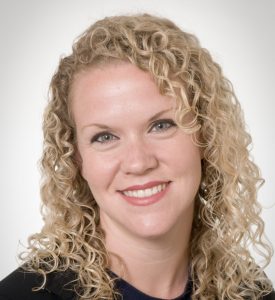by Lois Elfman
The Institute for Women’s Policy Research (IWPR) has released a guide detailing how to forge much-needed collaborations with Head Start.
As a follow-up to last year’s report “Head Start-College Partnerships as a Strategy for Promoting Family Economic Success: A Study of Benefits, Challenges, and Promising Programs,” IWPR has released a guide outlining how to evaluate the benefits a Head Start program brings to a campus and how to initiate such collaborations.
“We felt partnerships between these two systems can serve a lot of different priorities and can bring benefits to both Head Start programs, to higher education institutions and most importantly to families,” said IWPR study director Lindsey Reichlin Cruse. “The resource we developed is an attempt to help colleges think through, ‘What do we need? What do families need who are enrolled on our campus? How might collaboration with local Head Start providers help meet some of those needs?’”
The step-by-step guide, “Head Start-College Partnership to Promote Student Parent Family Success: A Roadmap to Guide Collaboration,” noted that access to affordable, quality childcare and learning opportunities is essential for student parents as they pursue college to improve their life opportunities. Approximately 1.8 million student parents with children under the age of six are income eligible for Head Start, a federally funded program that provides comprehensive early childhood education, health, nutrition and parent services to low income families.
Reichlin Cruse said institutions need direction on how to start conversations with Head Start providers. Last year’s report documented the presence of Head Start partnerships around the country and evaluated the rewards and challenges of such collaborations.
“We were able to use that information in providing keys for success and things to avoid to put this guide together,” Reichlin Cruse said. “We took a lot of the lessons that were shared with us from partnership leaders and staff as well as lessons that we gleaned from their origin stories. We asked a lot of questions about how they started and how they’ve managed that partnership over time.”
IWPR asserted that Head Start can be a crucial component in persistence and completion for student parents, whether it’s peace of mind, quality services, access to healthcare or wrap around supports.
“There is an increasing emphasis on equity in college outcomes for low income students, for first-generation students, for students of color. Student parents intersect with each of those groups,” said Reichlin Cruse. “The more institutions can find cost effective, collaborative, innovative ways to help students work through and overcome some of these road blocks, the better their outcomes are going to look and the more progress they’re going to make toward the priorities they’ve set. Head Start is well positioned to serve this population.”
The guide notes there are presently around 60 partnerships between colleges and universities and Head Start programs. For institutions desirous of exploring a new partnership, the guide suggests analyzing data on student parents’ needs, financial status and other barriers to completion they may be facing, such as housing and food insecurity. Data sources such the Free Application for Federal Student Aid and a campus childcare center roster and waitlist should be consulted. Disaggregated data can build the case and the guide suggests sharing it with key stakeholders.
Reichlin Cruse said there are some erroneous assumptions made both by institutions and by Head Start programs. “These are complex, bureaucratic systems with separate funding sources,” she explained. “You can understand why it can be hard to think about how to merge such large systems.”
The model is not going to work in every community, Reichlin Cruse said, and IWPR is not saying such a partnership will work for every college or university. Thus, the guide points out means of analyzing situations, such as conducting student surveys and focus groups, utilizing institutionalized data collection and reviewing Head Start data that shows college students benefitting from the services.
“In places where they can find areas of mutual gain and cooperation, I think it’s absolutely worth pursuing because I think families will really benefit in the end,” Reichlin Cruse said.
The guide provides some resources for institutions to find Head Start partnerships within their states, such as Head Start regional offices and the National Coalition of Campus Children’s Centers. Once information has been amassed, start building bridges between institutions and Head Start. The guide also offers steps to take for a successful collaboration, including consistent communication, campus buy-in and flexibility.
Budget cuts due to COVID-19 are steep on many campuses and have impacted existing campus childcare services. That makes it more essential to build community partnerships to serve student parents, said Reichlin Cruse. Head Start is well resourced to provide emergency services and services to families in crisis. While Head Start may be impacted moving forward, she sees it as more sustainable than campus childcare programs.
Reichlin Cruse said IWPR received feedback on the guide before releasing it, and they are now seeking more input before releasing a revised version. A final version will be released in spring 2021. That will incorporate feedback from program leaders and other early learning and higher education experts.




